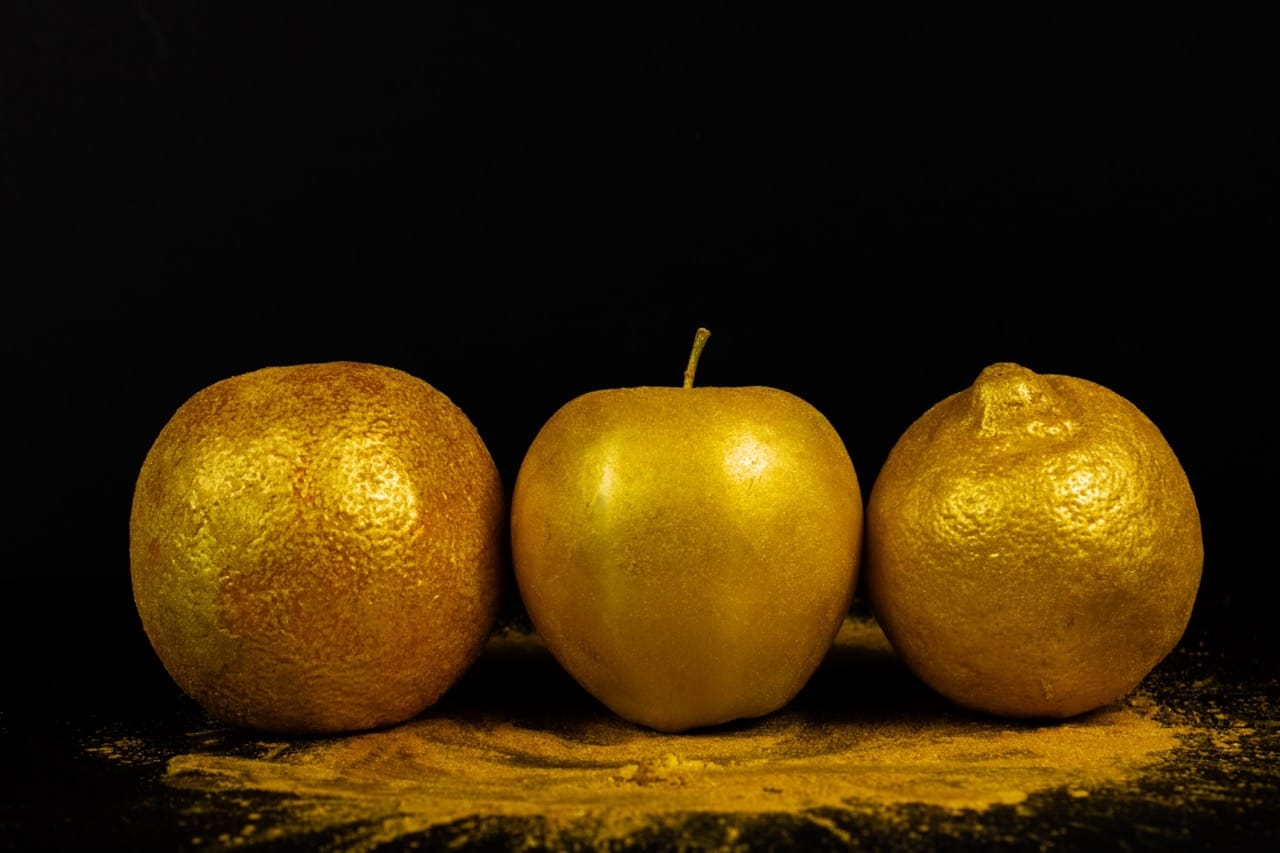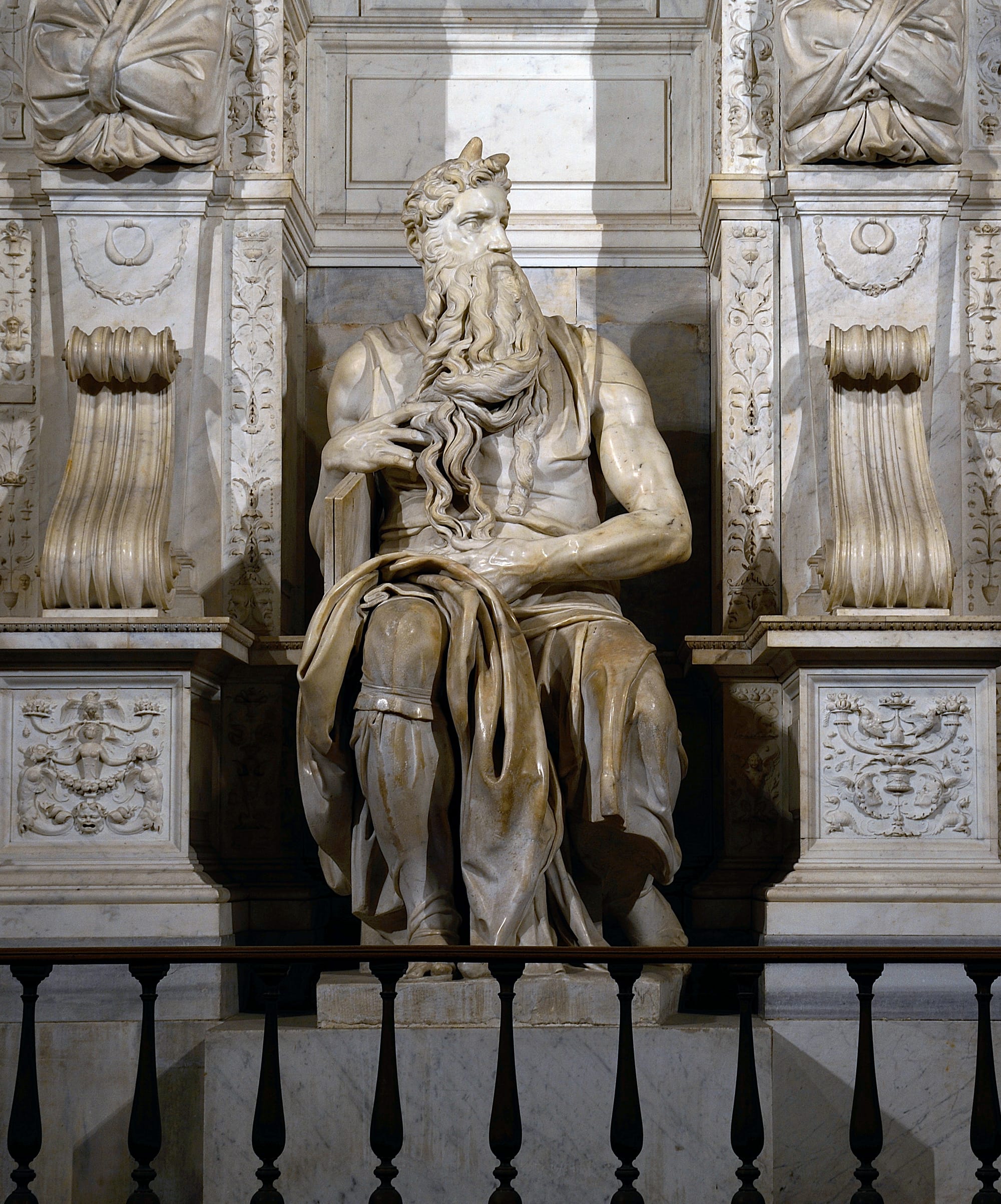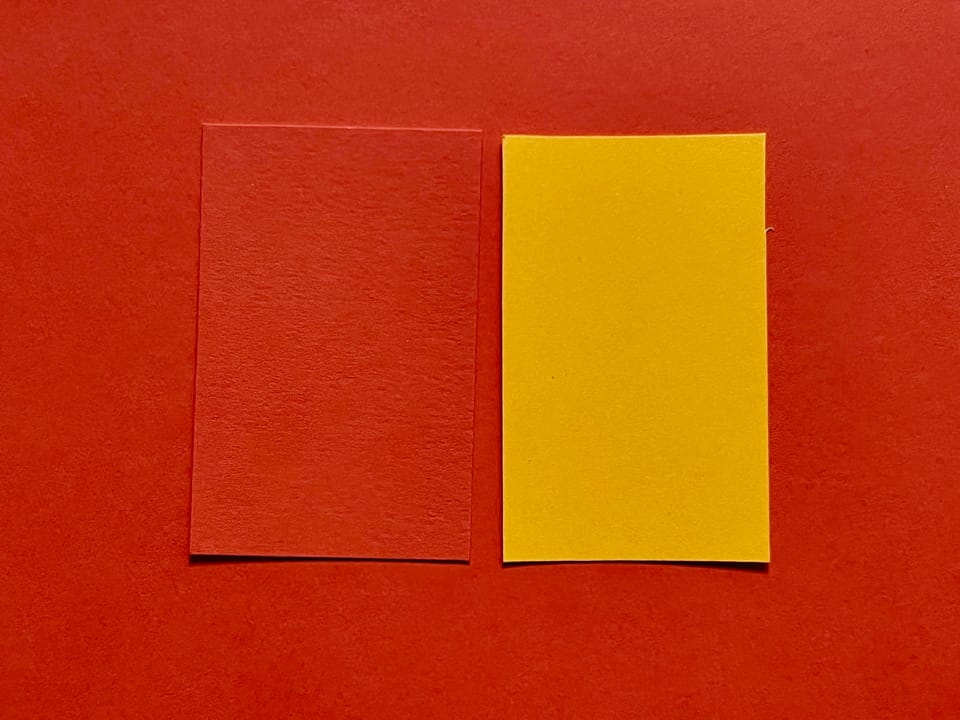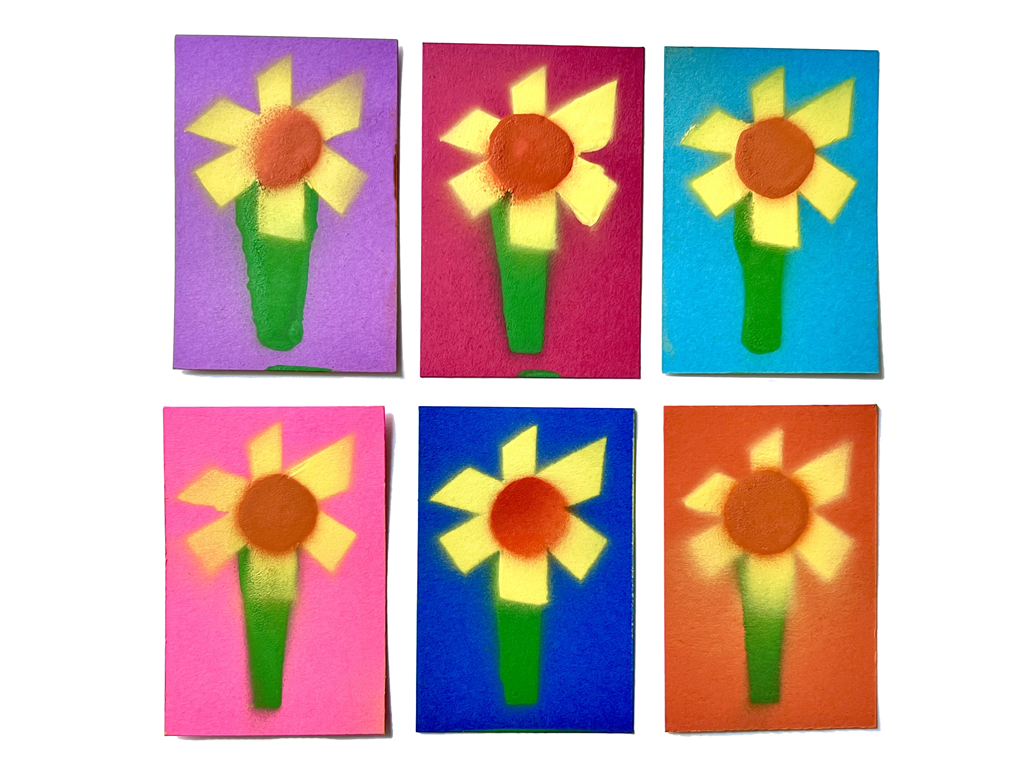All Gold Doesn't Glitter
An etymology of many things golden.

There is a very famous (in some circles) and relatable xkcd internet comic:

With that in mind, late last week I had noticed an Instagram video. In it, an etymologist made two claims, the first being that the color orange was named after the fruit, and the second that people in antiquity didn’t have a color blue. He even used Homer’s “wine-dark sea” to prove the latter. He doesn't subscribe to Colorphilia.
Something struck me very off about the first claim, a very common mistaken claim that I probably would have made before starting to research the etymologies and linguistics of color.
Golden Oranges
As I tried to figure out why I was bothered by the claim, I thought back to the newsletter I wrote about the color of carrots. In it, I showed that the color that Dutch had considered the color to be, before adopting the word “orange” was “golden”. Indeed, the word “orange” in French, was derived from the word gold (d’or), ie. pomme d’orange, the golden apple or fruit. In fact, most of the medieval references I found about oranges explain that it is a golden color.
Anglophonic Monoglots
It’s as if we created a color based on salsa verde, and called it “verde”, and then we make the claim that the color “verde” was based on the dish, which literally means “green sauce”.
It reminds me of how the “dish” curry was invented by a misunderstanding of the British who kept hearing the word “curry” in India, and didn’t realize that was simply the word for “sauce”. One of the side effects of this is that “curry sauce” became phrase like “chai tea”, “ATM machine” or “PIN number”. When this happens with acronyms, this fun phenomenon is apparently called “RAS syndrome” (redundant acronym syndrome syndrome), but when it happens with foreign words, it’s just called “Anglophonic monolingualism”.
In other words, the shades which we currently consider to be in range of the color “orange” were previously considered to be “golden”. But range of “golden” colors have historically included a lot more than just what we currently call “orange”.
I created a video in which I explained the difference between French name of “pomme d’orange” and the Arabic-Spanish name of “naranja” to refer to the fruit, and that “naranja” is derived from a word that refers to the fragrant scent of the fruit, whereas the "orange" is derived from a color word that refers to the appearance of the fruit.
Golden as color
It is logical that French would choose to connect the fruit with a descriptive color, because in a Latin-based language, gold is a color. Already in Virgil (and other places) we see the concept of aurea mala, or golden apples used to describe fruits. As I said in the video, it makes a lot of sense that went the orange came to Europe, the French saw it, and said “oh, we’ve already seen this concept exist in Latin” and created a calque of “golden apple”.
But in a language like Arabic, where the initial connection with gold (dhahab) is not visual, one would would look at the other qualities of the fruit, like the fragrant scent.
What is gold?
Gold is a little more complicated a concept than we usually think. The meaning and the intertwined metaphors have become so entrenched that words in languages evolved from these metaphors.
Physical Gold vs Golden Light
The Arabic dhahab, like the Hebrew zahav, and the Aramaic dahab, are all derived from the physical properties of gold, whereas the French d’or, which comes from the Latin aureus, is more connected to the shiny, gleaming appearance of gold. This is because aureus is a “light” word, or a connected to light, clear or airy nature. It is not directly connected to “aura”, but they are linguistic cognates and cognitively connected.
Gold's Usefulness
When we think of gold, we can think of various properties. Gold is a mined mineral we describe as a metal, gold can be used to store value, and gold can be use for transactions.
A pretty good, but not perfect, contemporary analogue to think about the distinctions is the Bitcoin debate about if crypto is a security or commodity, even though originally, it was considered to be a competitor to traditional fiat (currency).
This turns into gold being a metaphor or symbolic of wealth.
Gold is malleable enough to be hammered very thin to be be used to gild other objects to give an appearance of gold, or to cut into threads for weaving into other fabrics. But in its natural state, gold glistens in the light but doesn’t glimmer. One would not consider gold to be shiny or sparkling until it's thoroughly worked.
Solid Gold
The name for the physical property of gold in Latin is chrysos, which comes from the Greek, and is derived from the Phoenician/Semitic root ḥ-r-ṣ, which is connected to plowing or digging. Indeed, it’s also the root for the Biblical synonym ḥaruts for gold, because gold needs to be mined. As in, “the thing I found when I was plowing my field.”
The d-h-b root in various languages refers to the generic metal, which ultimately started referring to gold. All metal is at first equally valuable, because it all would have the same scarcity. And as it wasn’t “glittering” or connected to currency, you would probably use some other descriptor to differentiate what you found. The more you become associated with something, the more you can better define it.
This progression in language is helpful, because we can realize that cultures that first discovered gold are going to refer to the more raw material, like the gold nuggets, while industrialized cultures may have not seen anything with is not highly processed and shined.
Gold in Pre-Columbian America
In a 16th century Spanish - Mexican dictionary, I discovered that the Classical Nahuatl word for gold was based on the color “yellow”, not vice-versa. This connects with the fact that the Mesoamerican Aztecs were not metal workers, and seemed to use gold and copper as a gilded layer, instead of as solid objects. For them, the value seemed to be solely in the color, and not in the composition.
The Incas, on the other hand, used gold and other metals to both create functional objects as well as to gild. They worshipped a sun god, with the king being the "son of the sun", and gold became very useful in creating religious accoutrement and tools, which resulted in golden objects being a divine symbol of wealth and importance, even though gold and other metals were not used as a currency or storages of value. Their value was in their usage.
Golden Song (of Songs) Lyrics
While this idea of distinguishing the root of the gold language as either being connected to the the visual or the physical hit me while I was thinking about “light” words, this distinction can be found in Song of Songs:
My beloved is bright and ruddy,
the most exalted from ten thousand*.
Canticles 5:10
His head is ketem paz (glimmering like fine hammered gold),
His hair curled,
And dark as a raven.
Canticles 5:11
His hands are rods of zahav, (gold)
Studded with Tarshish (yellow jasper**);
His belly a tablet of ivory,
Adorned with sapphires.
Canticles 5:14
His legs are like marble pillars
Set in sockets of paz (pearl)…
Canticles 5:15
*ie. one in a million
**a semi-precious gem mined in the city of Tarshish, the city mentioned in Jonah
Cant. 5:11 is talking about the visual glowing nature of the beloved’s countenance, so we use a light word “glimmering”. Ketem is related to the Semitic root for hammered, so the phrase refers a fine, worked gold, that glimmers like pearls (paz). It omits the actual word for gold, which is understood from the context.
Cant. 5:14 is referring to the physical valuable nature of gold, which can be studded with semi-precious stones, needed to bring out its color. A similar comparison happens in the second of the same verse, with ivory being used to describe the hardness of the abdominal muscles, to which sapphires, one of the hardest, most durable minerals, are added.
And Cant. 5:15 is often mistranslated with paz as gold, but the visual similarities between smooth white marble pillars and glossy white pearl sockets is a lot more likely than simply adding another gold in there.
Ceremonial Golden Citrus (Citron / Etrog)
I found Jewish commentators in 11th and 12th century Spain referring to the yellow citron as a “golden (zahav) fruit” in Hebrew. This is interesting, because they would have been referring to the orange as the naranja. While it may seem to “disprove” my general point, the language that they were writing was not the language which they spoke on a day to day basis. They were translating their Spanish and Latin understanding into Hebrew.
This shows the range of colors that can be included within the range of “golden”, as well as being interesting because it is described from the “hadar” tree. While in the Assyrian language, for example, we can find an indigenous tree called the Adāru, which is connected to the citron tree, versions of the root “h-d-r” also have the connotation of “honor”, “glory”, “beauty”, “pleasant”, “pleasure”, or “happy” in various languages.
In the Babylonian Talmudic discussion on the origin of the name, there is a disagreement if the etrog (citron) needs to be beautiful (with the definition of ‘not looking dry’) or if it is only named that because the fruit does not fall off the tree, as d-y-r also is related to domicile, like the Arabic dār which means “house”.
The Palestinian Midrash from the same period, though, refers to the “flavor” and “scent” of the citron, and does not mention the beauty of “visual appearance” that same section. It may be that for one of the groups, it was a theoretical discussion, and for the other group, it was a scent and flavor they knew well.
Famous Golden Descriptions
Back to the color of gold, we see a lot of references in Latin to things being compared to “golden”, like beards, hair, faces, peacocks, rain, horses, wine (like I wrote about two weeks ago), amber, honey, ships, the sun, and somehow also the moon.
Golden was an entire category, that didn’t only refer to the literal color (but included it), it also conferred a level of prestige upon the object which was being described as “golden”. Not everything yellow or orange, for example, would receive that appellation.
It does mean that we end up being unsure what exactly a golden fruit is. Is it a lemon, is it a quince, is it a golden delicious apple? In various medieval Latin, Italian, Spanish, and French texts which listed the species of various fruits, I found varying definitions of which precise species the golden fruit, the orange, and even the naranja was. It reminded me of the same confusion which existed with relation to carrots.
The difference between Golden and Orange
In the year 2024, orange and golden are considered two distinct colors, which is why this entire post seems slightly pedantic in nature. Orange has developed its own connotations, independent of golden.
But the main difference between golden and orange is that golden is a descriptive color word, not a generative or categorical color word. Orange belongs in the world of the color wheel, existing between yellow and red. Orange is an extremely easy color to create. Golden is not.
Photographers call the time immediately after sunrise or right before sunset the "golden hour", even though it is more "accurate" to describe the colors in the sky as reds and oranges.
Golden does more than describe the color, it describes the vibe, and that can't be found on any color wheel.

Some Thoughts about Horns
While I completed the point that I intended to make in this newsletter, and while I wanted to keep this relatively short, there were two additional pieces that are completely optional to read, and they will not be on the test.
I admit to be being wrong about various things.
Golden Nugget
The Golden Gate Bridge is painted a shade called international orange, but a "Golden Gate" is more than the physical metal, but the metaphorical access it to opportunity and untold wealth.
Encyclopedia Brittanica explains: (bracketed additions my own)
"The name Golden Gate was given [to the strait which is now spanned by the bridge of the same name] in 1846 [before the Gold Rush] by Captain John C. Frémont in analogy to the Golden Horn of the Bosporus (Turkey) when he visualized rich cargoes from the Orient flowing through the strait."
He had written:
To this Gate I gave the name of 'Chrysopylae', or 'Golden Gate'; for the same reasons that the harbor of Byzantium was called Chrysoceras, or Golden Horn.
and that the strait was
"a golden gate to trade with the Orient".
Frémont was not exactly correct, although his sentiment was in the right place.
Frémont used literal Latin translations from the Greek for both the name of the gate as well as the name of harbor, while the actual Latin names were different.
The name the "Golden Horn" to describe the Bosporus was derived from the Greek (Χρυσόκερας, Chrysokeras), while the Latin, Turkish and Arabic words refer to it as a body of water.
Similar to many names of Greek and Roman antiquity, a mythical etymology exists. The late myth ascribed the name to the daughter of Io and Zeus, Cerossa, meaning "the horned", born on the banks of that body of water. Her son was Byzas, the mythical founder of Byzantium, who named the Golden Horn after his mother.
The Greek name is based on the physical concept of solid gold, not the golden lights. However, the Latin name "sinus Ceratinus" has nothing to do with gold, it's simply a mistranslation of the Greek.
That said, there is a "Golden Gate" to the city, as its main entrance. There is a lost Latin inscription which attributes it to Theodosius II, who brought a "golden age" (aurea saecla). The gate was gilded, not created of solid gold. The Latin name of the gate was "Porta Aurea", while the Greek was "Χρυσεία Πύλη, Chryseia Pylē".
Much like the later Golden Age of the Dutch, this golden age was accompanied by education and the arts, including building the University of Constantinople which lasted more than a millennium.
This also means that I was probably slightly wrong in one aspect of my carrot newsletter.
They were called hoornsche wortelen (horned roots), identified not by their color, but rather by their distinctive shape, as they were long and shaped like the horns of a goat. Around the world, they were known since the 16th century as the "Dutch Horn". That's why they were so celebrated in the paintings.
I have to do more research, but I have a feeling that the name of the Dutch Horn carrots, was also due to it's being a "golden horn".
Also, check out the golden apples in this 15th century painting by van Eyck, whose 16th century frame which included a line from Ovid, "Pollicitis dives quilibet esse potest."("In promises, anyone can be wealthy.") It's a great very early example of perspective being used in art, and there is a cute dog in it.
Both Homonyms and Homophones are Legitimately Difficult
While researching the previous nugget, my mind went to Michelangelo's Moses (below), portrayed with horns. This followed a tradition of Vulgate-reading artists, who read "cornutam Mosi faciem" in Exodus as "the horned face of Moses."
As the medieval depictions of the Devil had horns, the medieval association between Moses and the Devil emerged. This was a new correlation, as the Christian obsession with the Devil heightened between the 14th and 19th centuries. I say this from tracking the use of the word "devil" in everyday language through the centuries in several languages, in addition to noting the various literary and popular works about the Devil that came through that period.
In Hebrew, the phrase is "קָרַ֖ן ע֣וֹר פָּנָ֑יו", which is translated as "the skin ('or) of his face shone (q-r-n)". The problem is that in the modern (non-Yemini) pronunciation, the unvocalized letter ayin in Hebrew word for skin ('or) sounds exactly like unvocalized letter aleph in the word for light (or), which also happens to be the French word for gold. The 'or and or are similar to what the French would call "false friends" because they are not linguistically related.
In general, the root q-r-n is not a "light" word, it's a "power" or "strength" word. Whether it was my own mistake or it was taught that way as a response to the antisemitic trope of Jews having horns, I've always remembered the phrase as "the rays of light of his face". I've always been wrong.
The connection does exist. In Habakkuk 3:4, we do see the connection between light (or) and rays (q-r-n). But there are multiple metaphorical meanings associated with the root, and nowhere else in the Bible does it mean "rays of light".
However, the uniqueness of the phrase in Exodus regarding Moses is that the word is being used as a verb, where it is usually used as a noun.
All of this is a roundabout way to say that Moses wasn't being compared to the Devil, Jews don't have horns, and I have no idea what the actual words mean.
I just couldn't help but think about it as I researched the "golden horn".





